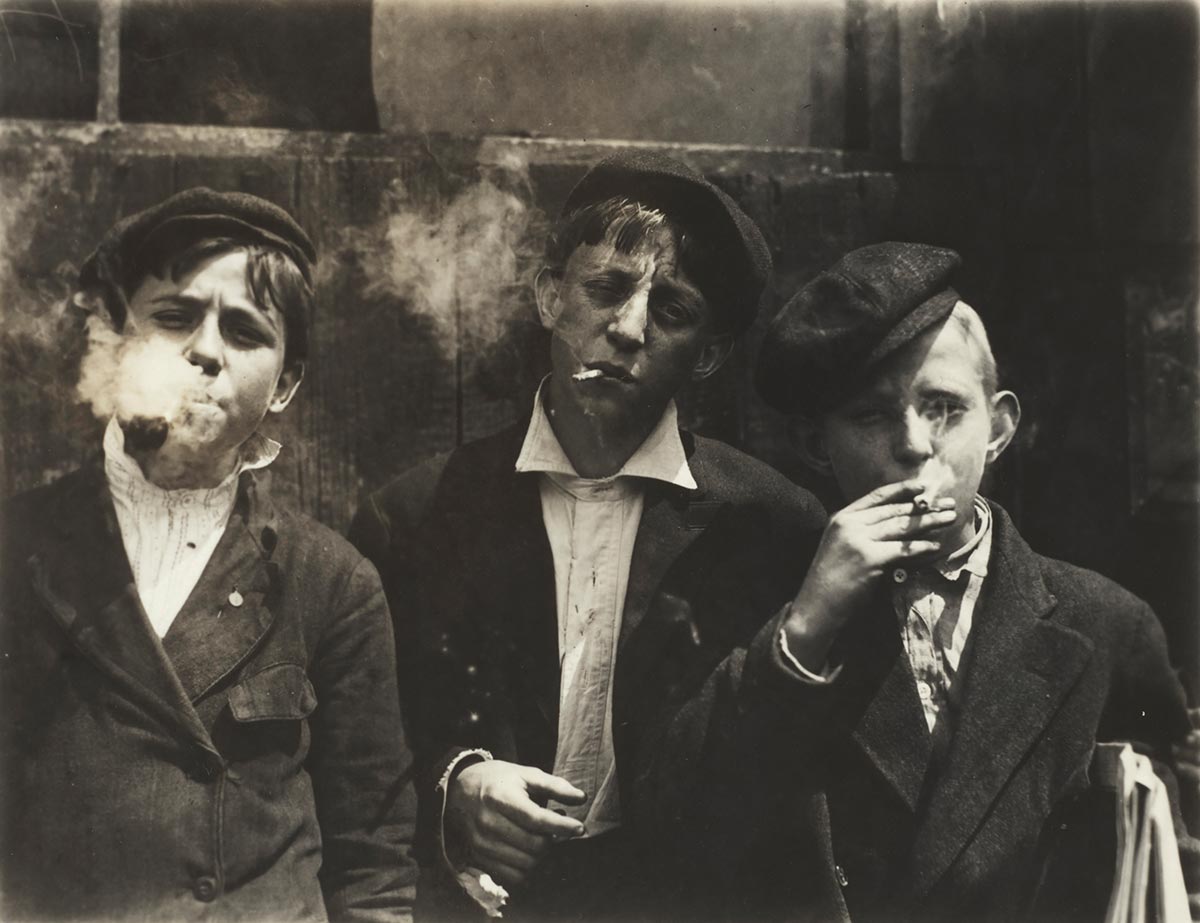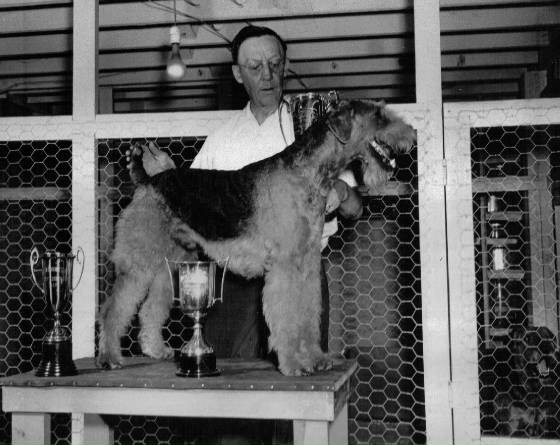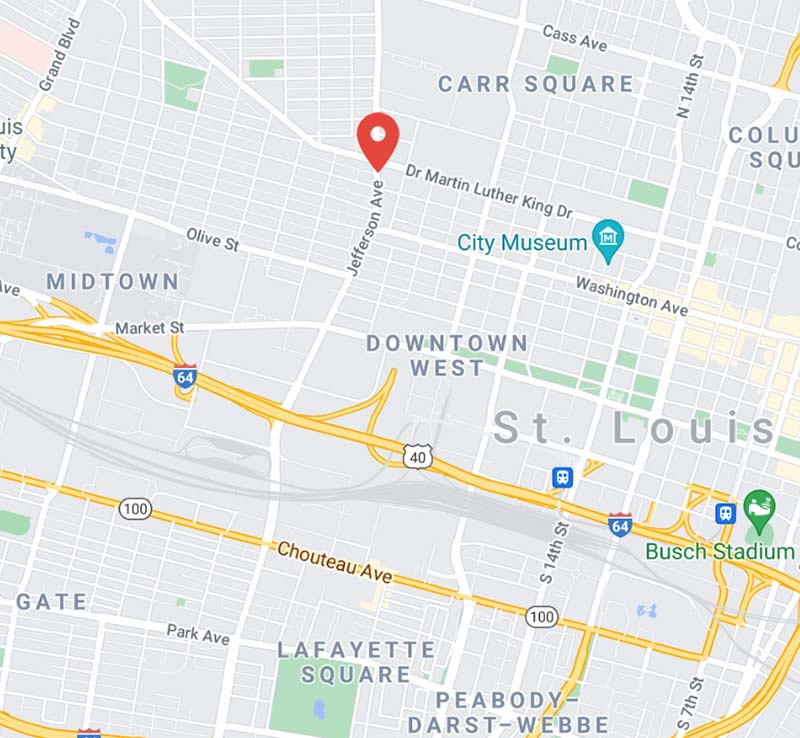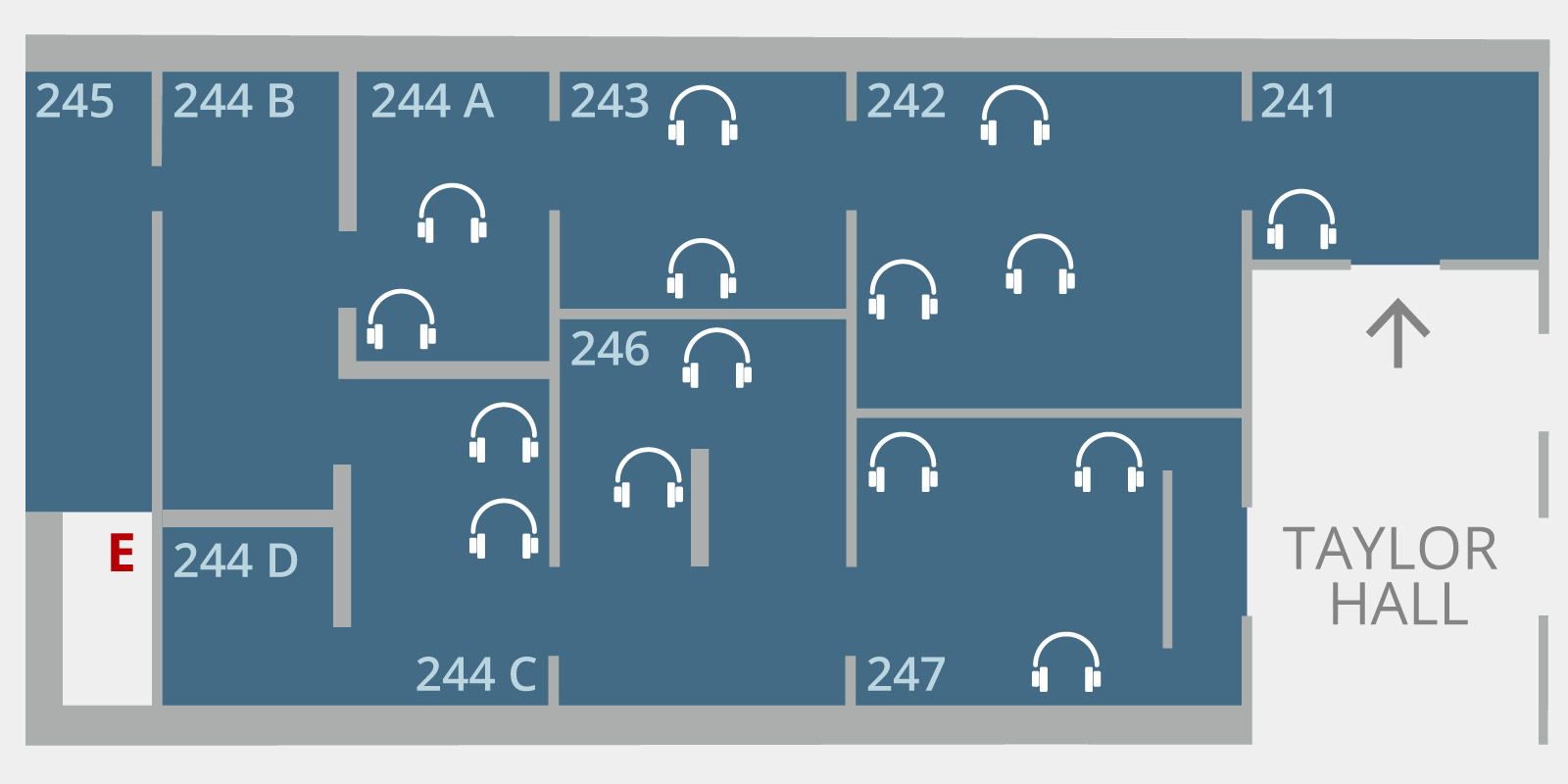Installation view of Art Along the Rivers: A Bicentennial Celebration
This audio guide features 15 commentaries on objects created over the past 1,000 years near the confluence of some of the continent’s most powerful rivers—the Mississippi and Missouri. Listen to a general introduction, narrators from the Saint Louis Art Museum, and voices from the confluence region community.
-
Access and Assistance
Free Public Wi-Fi
The Saint Louis Art Museum offers free Wi-Fi to visitors. From your device, access the SLAM_GUEST network.
Large Print Labels
Large-print labels are available on your own device and upon request at the Taylor Hall Welcome Desk.
AUDIO GUIDE TRANSCRIPT
The audio guide transcript is available to view on your own device.

Newsies at Skeeter Branch, St. Louis, Missouri, 11:00am, 1910
Lewis W. Hine, American
- Transcript
Speaker: Melissa Wolfe
Curator of American Art
Saint Louis Art MuseumThe following audio recording references inhumane child labor conditions.
Hello, I’m Melissa Wolfe, curator of American art and cocurator of Art Along the Rivers.
In 1910 Lewis Hine spent nine days in St. Louis making over 130 photographs of child laborers such as these three newsboys—or newsies, as they were called—but also of children as young as 4 years old working in shoe, glass, printing, and medicine factories in the city. Hine traveled across the country making similar photographs in order to gather evidence of unsafe child labor conditions for the National Child Labor Committee. In 1912 the committee was able to establish the Children’s Bureau, which is now part of the Department of Health and Human Services.
The Labor Committee struggled to elicit empathy in well-off communities for a newsboy. The seeming independence of “working the street” as he did fit too well into the country’s romanticized notions that a young, down-and-out boy could make his fortune through just such an entrepreneurial endeavor. However, as with most of our romanticized notions, newsboys rarely if ever found their way out of poverty. The Labor Committee had determined that newsies worked under the least supervision of any urban child laborer. They were not working for themselves and were often beat by their employers if they didn’t sell enough newspapers. They were frequent targets of robberies, and they often took on adult vices such as smoking, drinking, and gambling at an early age.
While Hine rarely identified the children in his photographs, the niece of the boy in the middle identified him from a photo published in the St. Louis Post-Dispatch in 2007. His name is Ray Klose, and he was likely working on this Monday at 11 am—which was his 13th birthday—rather than being in school because his father was often ill and had a tough time finding steady work. Ray didn’t graduate from elementary school, but he became a streetcar conductor. He and his wife, Stella, lived their entire lives in north St. Louis, where they also raised and showed Airedale terriers.
- Gallery Text
Art as Advocate
Many events central to the history of the United States occurred in the confluence region. St. Louis is among America’s cities whose residents have advocated most fiercely for social and political change. Some of the area’s pivotal events have national significance, such as the 1820 Missouri Compromise and the 1847 initial decision in the Dred and Harriet Scott case.
The region also saw the Civil War’s first general emancipation in 1861, the nation’s first general strike in 1877, and some of the most radical labor politics and demonstrations in the 1930s. More recent activism has addressed the continued destructive inequities of racism, including turbulent clashes in Cairo, Illinois, in the 1960s and the intensification of the Black Lives Matter movement following the 2014 fatal shooting of Michael Brown Jr. in Ferguson, Missouri.
Artworks in this section advocate by drawing attention to politics, people, and places. Some have communicated support for political policies or promoted recognition of people from marginalized groups. Others have countered social injustices or investigated relationships between humans and nature. All speak boldly in the hope of effecting change.
Lewis W. Hine, American, 1874–1940
Newsies at Skeeter Branch, St. Louis, Missouri, 11:00am, 1910
gelatin silver printThe Art Institute of Chicago, Purchased with funds provided by Charles and Ruth Levy Foundation, 1974.216 2021.169
Three newsies, or newspaper boys, pose with a confident swagger for the camera. Photographer Lewis W. Hine encountered them in a place known as Skeeter’s Branch, at Jefferson Avenue and present-day Dr. Martin Luther King Drive, just northwest of Union Station. Hine was traveling around the country on a mission to document scenes of child labor for the National Child Labor Committee.
Declaring that he “wanted to show things that had to be corrected,” the artist tightly framed his photographs to bring viewers into an intimate, humanizing encounter, as seen here. His pioneering work led directly to federal legislation prohibiting child labor, passed in 1916.
Learn More
Raymond Klose with one of his Airedale Terriers, c.1960.

Detail map near Skeeter Branch, near Jefferson and Washington Streets, St. Louis (red marker).

Credits
Lewis W. Hine, American, 1874–1940; Newsies at Skeeter Branch, St. Louis, Missouri, 11:00am, 1910; gelatin silver print; 4 15/16 x 7 inches; The Art Institute of Chicago, Restricted gift of Charles & Ruth Levy Foundation 2021.169; The Art Institute of Chicago / Art Resource, NY
Joe Manning (1941−2021) was an author, historian, genealogist, freelance journalist, poet, photographer and songwriter. Nationally known for the Lewis Hine Project, he identified hundreds of the child laborers Hine photographed from 1908 to 1924 for the National Child Labor Committee, tracked down and interviewed descendants, and wrote stories about how the lives of these children turned out. His stories and research are documented on his website Mornings on Maple Street, and can also be found in the Library of Congress's collection of Hine's child labor photographs and related material.
Map data © 2021 Google

